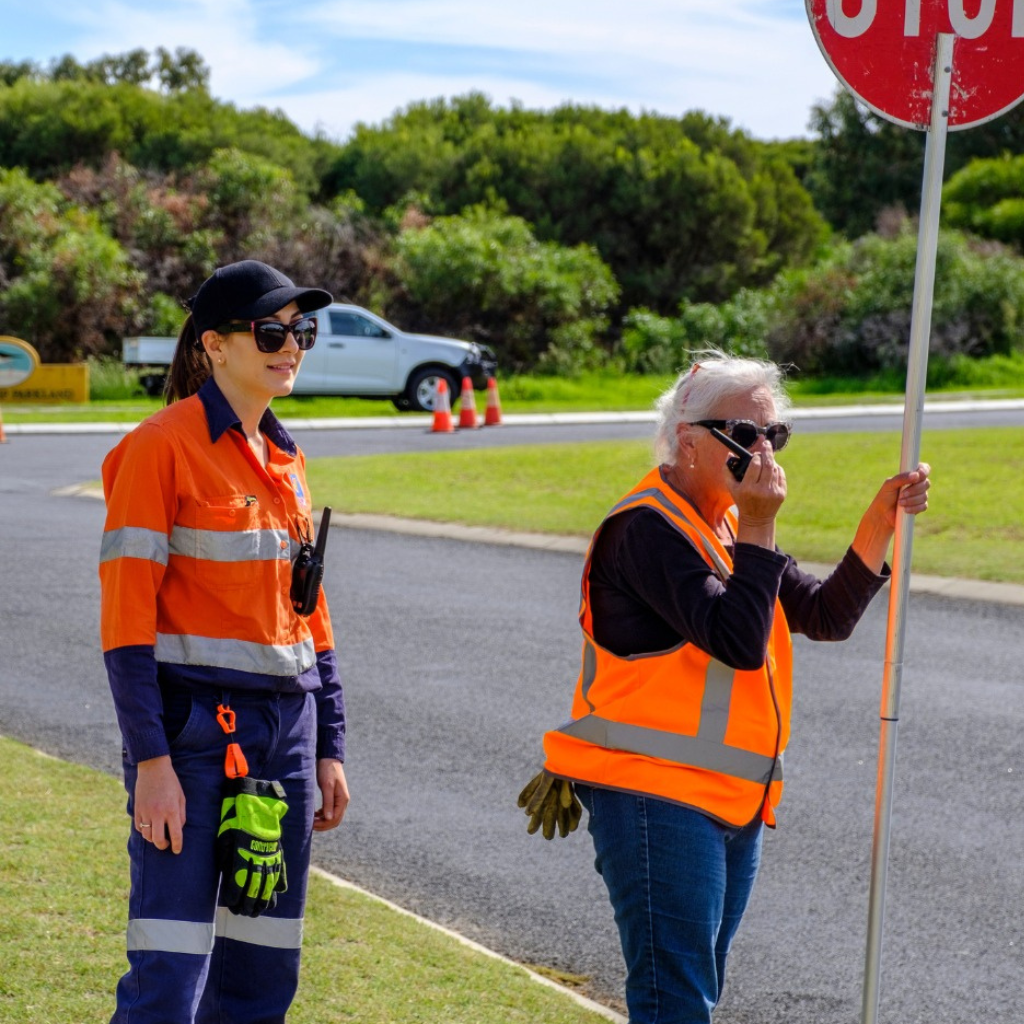Traffic management is essential for ensuring the safety and efficiency of road users and is critical for the smooth operation of our transportation systems. It involves the planning, implementation, and maintenance of various measures and devices to control the flow of traffic and reduce the risk of accidents and congestion.
Main Roads Western Australia is the government agency responsible for the management and maintenance of the state’s road network. They play a crucial role in providing guidelines and standards for traffic management plans to ensure that all traffic management activities are carried out safely and efficiently. These guidelines cover a wide range of topics, including the design and installation of traffic control devices, the management of temporary traffic arrangements, and the management of traffic during special events.
By following the guidelines set out by Main Roads Western Australia, traffic management professionals can ensure that their plans are compliant with the latest standards and best practices. This can help to minimise the risk of accidents, reduce congestion, and improve the overall safety and efficiency of our road network.
We have prepared the ultimate guide where we take a closer look at the specifics of complex and non-complex traffic management plans and the guidelines that Main Roads Western Australia provides for them.
We will explore the key differences between the two, the requirements and details of each, and how to ensure that your traffic management plan complies with the guidelines set out by Main Roads Western Australia.
Complex Traffic Management Plan TMP
A complex traffic management plan is a plan that is required for activities that have a higher level of risk and impact on the road network. These plans are typically required for activities such as major roadworks, special events, or emergency incidents that require a high level of coordination, planning, and management.
Examples of situations that would require a complex traffic management plan include:
- Major roadworks or construction projects that involve the closure of multiple lanes or the complete closure of a road
- Special events that attract a large number of attendees, such as major sporting events or festivals
- Emergency incidents, such as accidents or natural disasters, that require the closure of a road or the implementation of detours
- Activities that involve the movement of oversized or overweight vehicles, such as the transport of mining equipment or wind turbine blades
- Activities that involve the closure of a road or the implementation of a detour that is expected to have a significant impact on the surrounding road network.
A complex traffic management plan would need to be comprehensive and detailed, covering all aspects of the traffic management from the planning, implementation, and maintenance stages. It would need to be developed in close consultation with all stakeholders, including local authorities, emergency services, and other relevant organisations.
4.2.3 Main Roads WA Traffic Management Code of Practice for Works on Road
‘Complex traffic management arrangements ‘are those activities and traffic management arrangements that include any of the following:
i. Any plan assessed as having a residual risk-rating of H (high-risk) or greater as a result of a risk assessment undertaken during the planning stage.
ii. Any plan that meets all the following:
- Occurs on a multilane road in the metropolitan area; and
- Closes or diverts one or more lanes(includes emergency lanes); and
- Occurs on any Freeway OR road with a permanent speed limit of 90 km/h or more (or a section of these roads where the speed limit is reduced due to traffic signals); and
- Has a traffic volume of 15,000 vpd or more.
iii. Any plan at permanent traffic signals that requires:
- Alteration to the function of the traffic signals or signal display (e.g. flashing yellow, masking displays, modifying movements or phasing); or
- Closure of a traffic lane (including tapers or road closures):
a) within a signalised intersection, or
b) within 30 m of the stop line on the approach, or
c) within 30 m of the adjacent stop line ont he departure, or
3. Closure of any part of a signalised dedicated turning lane; See the Temporary Traffic Management: Traffic Signal Policy for more details.
iv. Any Traffic Management arrangement involving Temporary Road Safety Barriers.
v. Any plan that involves the removal or replacement of permanent road safety barriers that are preventing a potentially catastrophic outcome, e.g. commuter rail or freeway barriers.
vi. Temporary diversion of traffic into the opposite lane of a multilane road creating a free flowing contra-flow situation (does not apply to contraflow implemented at overtaking lanes).
vii. Plans that will redistribute traffic, significantly lowering the level of service and safety of the surrounding road network, including isolated intersections.
viii. Any other situation where the road authority or authorised body consider the traffic arrangement sufficiently complex to warrant RTM review and endorsement. TMPs for works involving ‘complex traffic arrangements’ shall be reviewed and endorsed by a Roadworks Traffic Manager (RTM) in the form of their signature, the date, block printed name and RTM accreditation number.
TMPs for works involving ‘complex traffic arrangements’ that have been prepared by a person holding RTM accreditation shall be reviewed and endorsed by another person with RTM accreditation.
Regardless of whether a particular TMP involves ‘complex traffic arrangements’ or not, the Road Authority/Authorised Body that grants approval for the works to proceed may determine that the TMP requires to be endorsed by an RTM.
Non-Complex Traffic Management Plan TMP
A non-complex traffic management plan is a plan that is required for activities that have a lower level of risk and impact on the road network. These plans are typically required for activities such as minor roadworks, lane closures, or routine maintenance work that can be planned and executed with minimal coordination and management.
Examples of situations that would require a non-complex traffic management plan include:
- Minor roadworks or maintenance activities that involve the closure of a single lane or the partial closure of a road
- Lane closures for routine maintenance or utility works
- Activities that have minimal impact on the surrounding road network
- Activities that have a low risk of accidents or incidents
A non-complex traffic management plan would need to be relatively simple and straightforward, covering the essential aspects of traffic management. It could be developed in-house by the organization responsible for the activity, and it would not need to be reviewed or approved by Main Roads Western Australia before it can be implemented.
The main objective of the plan would be to minimize the impact of the activity on the road network and the safety of road users while ensuring the smooth operation of the transportation systems.
Summary
Complex and non-complex traffic management plans are both important tools for ensuring the safety and efficiency of road users, but they have some key differences in terms of their requirements and details.
In summary, the key differences between complex and non-complex traffic management plans are the level of risk and impact on the road network, the level of coordination and management required, and the level of detail and complexity of the plan. Complex traffic management plans are more comprehensive and require more approvals than non-complex plans, but both types of plans are essential for ensuring the safety and efficiency of road users.
Take the hassle out of worrying if your TMP is compliant and meets all requirements. We have a team of Traffic Planners who can design all types of TMPs from roadworks, events and non-complex or major complex planning. Request a quote.
Or perhaps you just want someone independent to come in and review your TMP and give you the peace of mind all areas are covered – we can help with that too!
References
- Main Roads Western Australia Website: The Main Roads Western Australia website provides a wealth of information about traffic management, including guidelines, standards, and best practices. You can access the website here.
- AS 1742.3-2010 Manual of uniform traffic control devices: This is the Australian standard that provides guidelines for the design and installation of traffic control devices, including signs, road markings, and traffic signals. It can be found on the Standards Australia website.
- Main Roads Western Australia Technical Bulletin TB01 – Traffic Management: This document provides detailed information on the requirements for traffic management in Western Australia, including the design and installation of traffic control devices and the management of temporary traffic arrangements. You can access it here.
- Main Roads Western Australia Traffic Management for Special Events: This guide provides information on the traffic management requirements for special events, including the planning and implementation of traffic management measures and the coordination of traffic management with other stakeholders. You can access it here.
- Main Roads Western Australia Traffic Management for Roadworks and Road closures: This guide provides information on the traffic management requirements for roadworks and road closures, including the design and installation of traffic control devices and the management of temporary traffic arrangements. You can access it here.
Do you need training?
AusQ Training offer a range of courses to assist you in the traffic management or construction industry, in Bunbury, Perth and all over WA – to view our range of public training courses [click here] or view our calendar here.
Make a time to chat to one of our Customer Support Team members [here] to discuss your traffic management training needs.


